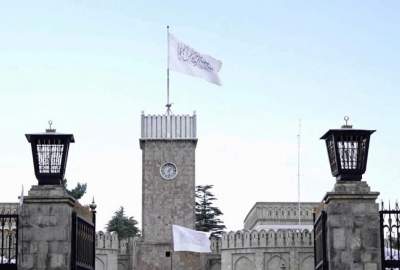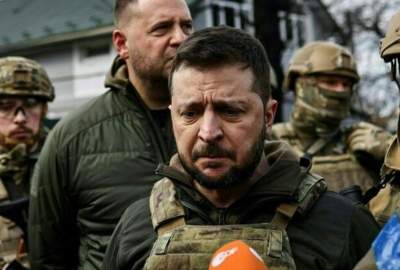Afghanistan’s new government policy on internally displaced persons (IDPs), launched last week in Kabul, was welcomed by the UN Refugee Agency (UNHCR) as a way to find more sustainable solutions for the country’s 620000 conflict displaced.
The achievement comes after more than a year of consultations, but aid officials acknowledge that the hardest part is still to come, as the government, supported by aid agencies, seeks to put the policy into practice.
“What IDPs want is not emergency relief - tents, shelter, food assistance and so on - what they actually want are solutions,” said Aidan O’Leary, head of the UN Office for the Coordination of Humanitarian Affairs (OCHA) in Afghanistan.
The new IDP policy confronts a difficult reality, illustrated most recently by the displacement of drought and conflict-affected farmers from Ghor and Badghis provinces, who have fled to the western city of Herat. Local government officials still want to see IDPs return home quickly, while IDPs tend to want to stay.
“I think the key aspect of the IDP policy that’s come forward is this push towards a broader range of solutions than simply ‘return to where you came from’, because the pattern of urbanization has demonstrated that the more people migrate to urban centres, they tend not to go back to the rural locations.”
No plans to leave, no plans to stay
Like many waves of IDPs before them, the 1700 families who have arrived in Herat since October have no plans to leave, according to interviews carried by IRIN at three different sites in and around the city.
But local authorities have no plans for the IDPs to stay.
The majority of the IDPs have now been moved to the Sa’adat township, a site 35km west of Herat, where they are staying in houses owned by refugee returnees from Iran. There, they are under the responsibility of the Afghanistan National Disaster Management Authority (ANDMA), a well-resourced state agency, for a three-month-long “emergency phase”.
“Then the government will need to come up with a plan for these people,” said ANDMA head Abdul Hamid Mubariz Hamidy.
“When you ask what happens after three months, there’s an attitude that that’s a problem for God,” one senior Afghan aid worker, who was not authorized to speak publicly, told IRIN.
Although they fled during a widespread drought, the IDPs cite insecurity as the reason for their displacement. They say they do not expect it to be safe enough in the coming months to return.
That is difficult for the provincial authorities to hear because the city is already hosting long-term IDP communities who have been displaced in Herat for more than a decade.
Herat residents often view IDPs negatively. “There are two views on the displaced,” said Hamidy. “One is an emotional reaction - that we need to help our Muslim brothers. The second is that these people are creating all the problems in Herat. That there are good living conditions here and that all cases of kidnapping and drug trafficking are done by these people.”
The new IDP policy is designed to get all government ministries and departments attuned to and working on IDP issues, rather than leaving all it to the Department of Refugees and Repatriation and UNHCR.
Aid workers warn that a number of issues should already be under consideration once acceptance grows that the Ghor-Badghis displacement is unlikely to be short-term.
Once the winter is over, schools will restart, but there seems to be little or no provision for the IDP children, who are staying far from city schools. In addition, for those families hoping to return, facilitation and planning needs to start now. Finally, the current Sa’adat township is private property, and was only chosen as a temporary home.
For many aid workers, government officials seem content to manage IDP issues in an ad hoc and short-term way. They are waiting to see how the new IDP policy will be implemented on the ground.
“I don’t see a big change coming in three months’ time,” said Qader Rahimi, regional programme manager with the Afghanistan Independent Human Rights Commission. “This is not the first time displacement has happened - it’s been 20 years. But no one is ever responsible! The accent is on charity. It’s about a rich government giving help, rather than a government taking its responsibilities seriously,” said Rahimi.
At the end of the three-month emergency phase, humanitarian assistance to the Ghor and Badghis IDPs is expected to decline, and more families are likely to start looking at ways to move back to Herat City to find work.
The bright city lights
A key part of creating working solutions for IDPs will be the acceptance that they are part of a wider process of urban migration and that the city offers them a better life.
Although three-quarters of Afghans live in rural areas, 40 percent of IDPs are in urban areas, where they have better access to jobs and basic government services, and, as one aid worker put it, they can get closer to “modern Afghanistan”.
“I think it’s this recognition that where they are is better than where they came from,” said O’Leary. “I think it’s dealing with that objective reality, what the displaced themselves are looking for, that has to be at the centre of what the approach is. Because if you don’t have their buy in, yes, they may temporarily move, but they’ll come back.”
As displacement becomes protracted, new IDPs become more difficult to distinguish from previous waves of IDPs, and also from the local community. All groups face chronic humanitarian needs due to the failure of development efforts and nearly four decades of war.
The achievement comes after more than a year of consultations, but aid officials acknowledge that the hardest part is still to come, as the government, supported by aid agencies, seeks to put the policy into practice.
“What IDPs want is not emergency relief - tents, shelter, food assistance and so on - what they actually want are solutions,” said Aidan O’Leary, head of the UN Office for the Coordination of Humanitarian Affairs (OCHA) in Afghanistan.
The new IDP policy confronts a difficult reality, illustrated most recently by the displacement of drought and conflict-affected farmers from Ghor and Badghis provinces, who have fled to the western city of Herat. Local government officials still want to see IDPs return home quickly, while IDPs tend to want to stay.
“I think the key aspect of the IDP policy that’s come forward is this push towards a broader range of solutions than simply ‘return to where you came from’, because the pattern of urbanization has demonstrated that the more people migrate to urban centres, they tend not to go back to the rural locations.”
No plans to leave, no plans to stay
Like many waves of IDPs before them, the 1700 families who have arrived in Herat since October have no plans to leave, according to interviews carried by IRIN at three different sites in and around the city.
But local authorities have no plans for the IDPs to stay.
The majority of the IDPs have now been moved to the Sa’adat township, a site 35km west of Herat, where they are staying in houses owned by refugee returnees from Iran. There, they are under the responsibility of the Afghanistan National Disaster Management Authority (ANDMA), a well-resourced state agency, for a three-month-long “emergency phase”.
“Then the government will need to come up with a plan for these people,” said ANDMA head Abdul Hamid Mubariz Hamidy.
“When you ask what happens after three months, there’s an attitude that that’s a problem for God,” one senior Afghan aid worker, who was not authorized to speak publicly, told IRIN.
Although they fled during a widespread drought, the IDPs cite insecurity as the reason for their displacement. They say they do not expect it to be safe enough in the coming months to return.
That is difficult for the provincial authorities to hear because the city is already hosting long-term IDP communities who have been displaced in Herat for more than a decade.
Herat residents often view IDPs negatively. “There are two views on the displaced,” said Hamidy. “One is an emotional reaction - that we need to help our Muslim brothers. The second is that these people are creating all the problems in Herat. That there are good living conditions here and that all cases of kidnapping and drug trafficking are done by these people.”
The new IDP policy is designed to get all government ministries and departments attuned to and working on IDP issues, rather than leaving all it to the Department of Refugees and Repatriation and UNHCR.
Aid workers warn that a number of issues should already be under consideration once acceptance grows that the Ghor-Badghis displacement is unlikely to be short-term.
Once the winter is over, schools will restart, but there seems to be little or no provision for the IDP children, who are staying far from city schools. In addition, for those families hoping to return, facilitation and planning needs to start now. Finally, the current Sa’adat township is private property, and was only chosen as a temporary home.
For many aid workers, government officials seem content to manage IDP issues in an ad hoc and short-term way. They are waiting to see how the new IDP policy will be implemented on the ground.
“I don’t see a big change coming in three months’ time,” said Qader Rahimi, regional programme manager with the Afghanistan Independent Human Rights Commission. “This is not the first time displacement has happened - it’s been 20 years. But no one is ever responsible! The accent is on charity. It’s about a rich government giving help, rather than a government taking its responsibilities seriously,” said Rahimi.
At the end of the three-month emergency phase, humanitarian assistance to the Ghor and Badghis IDPs is expected to decline, and more families are likely to start looking at ways to move back to Herat City to find work.
The bright city lights
A key part of creating working solutions for IDPs will be the acceptance that they are part of a wider process of urban migration and that the city offers them a better life.
Although three-quarters of Afghans live in rural areas, 40 percent of IDPs are in urban areas, where they have better access to jobs and basic government services, and, as one aid worker put it, they can get closer to “modern Afghanistan”.
“I think it’s this recognition that where they are is better than where they came from,” said O’Leary. “I think it’s dealing with that objective reality, what the displaced themselves are looking for, that has to be at the centre of what the approach is. Because if you don’t have their buy in, yes, they may temporarily move, but they’ll come back.”
As displacement becomes protracted, new IDPs become more difficult to distinguish from previous waves of IDPs, and also from the local community. All groups face chronic humanitarian needs due to the failure of development efforts and nearly four decades of war.
Source : Afghan Voice Agency (AVA), International Service







